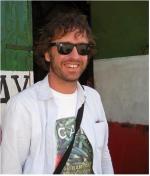The cocoa market in Eastern Europe is dominated by multinationals mainly purchasing bulk cocoa. At the same time, Eastern Europe is a slowly emerging market for high-quality chocolate. Although trends towards higher quality and growing consumer knowledge lag in comparison with western European countries, Czech Republic, Poland and Bulgaria increasingly offer interesting opportunities for high-quality cocoa.
There is a growing demand for natural ingredients in the European cosmetics sector, creating opportunities for exporters of avocado oil from developing countries. Avocado oil has a number of functional and active properties, giving it applications in a wide range of formulations. Avocado is a popular fruit with European consumers, encouraging personal care formulators to start using it in their formulations. It is expected that the demand for avocado oil will continue to rise in the coming years in Europe.
Search
Enter search terms to find market research
The growing popularity of food-based ingredients and rising consumer awareness of natural products in Europe are generating demand for avocado oil. There is a growing market for natural cosmetics in Europe. Avocado oil is increasingly used in personal care products as brands look to replace synthetic chemicals with natural ingredients. Avocado oil is mainly used in three market segments: food, cosmetics and health products. Avocado oil is produced in developing countries, but also in Europe and North America.
The supply chain of fresh fruit and vegetables is becoming more digital. Digital technology can facilitate aspects of each stage in the chain. It allows you to improve product quality and safety, increase efficiency and transparency, and get better access to finance and buyers. Digital tools can even help make your business more sustainable. When digitalising your business, you must carefully select the technologies you invest in, to ensure that the benefits outweigh the costs.
Search
Enter search terms to find market research
European table and kitchen linen imports have recovered from the 2020 dip. With most of these imports coming directly from developing countries, Europe is an interesting market for you – especially the middle- and higher-middle segments. To supply these segments, you must pay attention to design and quality. Working with sustainable materials and the ability to customise can give you a competitive edge. Demand is driven by an increased interest in slow cooking, and consumers spending more time cooking and socialising at home.
The European market for salad sets offers opportunities, but competition is strong. Given that the lower ends of the market tend to be dominated by mass-producing countries, the middle to high-end segments are likely to be the most promising for you. To appeal to these consumers, you should add value to your products through design, artisanry, materials and the story behind your salad sets. Sustainability also plays an important role.
Search
Enter search terms to find market research
European imports of tableware and kitchenware have recovered strongly from their dip in 2020. With more than half of these imports coming directly from developing countries, Europe continues to be an interesting market for you, particularly the middle to high-end segments. You can use design, sustainable values, artisanry, materials and the story behind your products to add value to your salad bowls and servers. Demand is driven by an increased interest in wellness, including slow cooking and learning new skills.
Cultural travel products that are sustainable and that have a positive impact on local cultures and communities are popular among European travellers. Employing enthusiastic and knowledgeable local guides who are properly trained and can speak tourists' language well is essential for a successful cultural travel product. European tour operators and OTAs are the key sales channels. Selling directly to independent culture tourists is also important.
Search
Enter search terms to find market research
Birdwatching is becoming increasingly popular among European tourists. The United Kingdom is the largest European source country for birdwatching tourism, followed by the Netherlands and Germany. Birdwatching tourism attracts experienced travellers and offers spacious destinations. Therefore, the expectation is that this niche market will recover relatively fast when COVID-19 restrictions decrease.
Search
Enter search terms to find market research
The United Kingdom is the largest bird watching market in Europe, followed by the Netherlands and Germany. The market for specialist tour operators is extensive in the UK, and they lead bird watching trips to a wide range of countries. Conservation and sustainability are important issues for European birders, and it is important that any bird watching travel product has good sustainable credentials.
Search
Enter search terms to find market research






